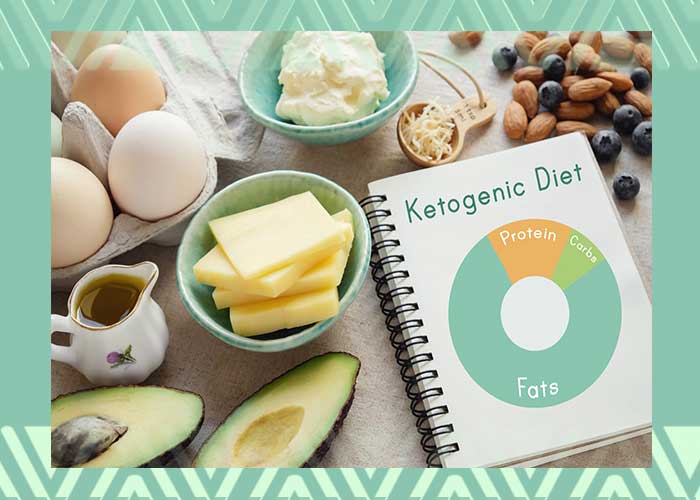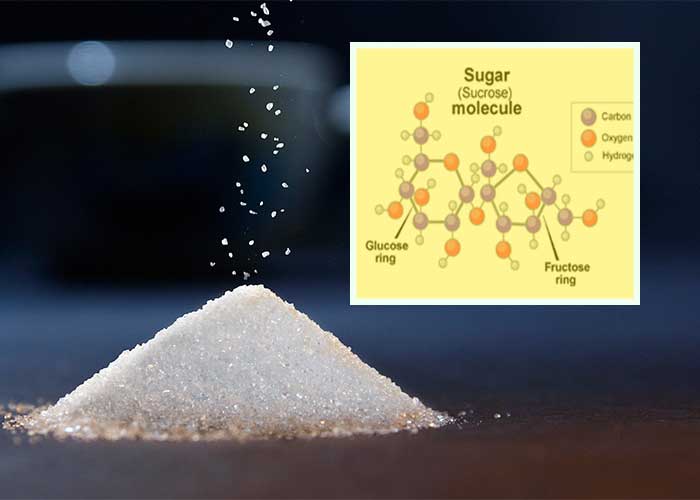The ketogenic diet has become more and more popular in recent years, as many people have experienced success in losing weight as well as improving their health, following this low-carb, high-fat diet, improved energy levels, and better blood sugar control. The substance of this low-carbohydrate, high-fat diet lies in accomplishing a state of ketosis, where the body primarily relies on ketones for energy instead of glucose. While carbohydrates or starches are notably restricted on the keto diet, it is important to understand the role of sugar intake within this nutritional framework.
For beginners, lots of people think you can not consume any type of carb at all to slip into the fat-burning state of the keto diet. But the truth is, some carbs are permitted. The approximate amount is about 50 g or fewer per day. But what about the consumption of sugar? Keto dieters have all but eschewed the sweet stuff in favor of calorie-free sweeteners like stevia. In this article, we would explore the recommended grams of sugar per day on the keto diet and its impact on ketosis and overall health. So, you can easily find the answer to this question: “How many grams of sugar per day on keto?”
Understanding the Ketogenic Diet
The ketogenic diet is created to shift the metabolism of your body from using glucose as its key fuel source to burning fats for energy. By considerably lessening carbohydrate intake and rising fat consumption, the body enters a state of ketosis. The ketone bodies are generated from fats in the liver. This metabolic state offers several benefits, including weight loss, improved insulin sensitivity, enhanced mental clarity, and so on. However, it is important for everyone interested to learn about the keto diet, the activity of sugar in your body, etc.
Keto Diet
Keto Diet or Ketosis is a metabolic state of your body. In this state, the body burns fat in place of carbohydrates. When you eat a diet high in carbs, your body creates insulin to convert those carbs into energy. When you limit your carb intake, your body starts to produce ketones, which are also used for energy.
Types of Keto Diet
Typically known, there are four types of keto diets popular around the world. They are:
- Standard Ketogenic Diet (SKD)
- Targeted Ketogenic Diet (TKD)
- Cyclical Ketogenic Diet (CKD)
- High Protein Ketogenic Diet (HPKD)
What is Sugar Exactly?
Most likely, when you think of sugar, you think of sucrose or white table sugar. Simply put, sugar is the collective term for all sweet-tasting carbohydrates.
The Structure of Sugar
The size of sugars can be used to classify them. The simplest type of sugar is monosaccharide. These monosaccharides (glucose, fructose, and galactose) can not be further broken down without renouncing their sugary identity.
Disaccharides are made from two monosaccharides. In the case of lactose, glucose, and galactose are the building blocks. Glucose and fructose are the two main elements of sucrose, commonly known as table sugar. Maltose is a product of 2 glucose molecules.
A short chain (less than 10) of monosaccharides makes up an oligosaccharide, whereas groups 10+ make up a polysaccharide.
Now the question is, “Why does all of this matter?” The reason is, sugar is a hidden ingredient in many foods. As previously mentioned, glucose and galactose are used to make lactose. This implies that the products you consume that are lactose-rich will contain more sugar. For instance, whole milk has a high lactose and sugar content. Again, the sugar and lactose content of cheese are both low. Foods can still contain a lot of sugar even if they aren’t typically thought of as sweet.
Other Names for Sugar
You won’t always find the name sugar on the food label or food ingredient list. Here are some common sugar names to watch out for:
- Fructose
- High Fructose Corn Syrup (HFCS)
- HFCS 55
- HFCS 42
- Cane Sugar
- rapadura
- Agave/ Agave nectar/ Agave syrup
- Sucrose
- Maltose
- Invert Sugar
- Molasses
- Dextrose
- Honey
- Malt Syrup or simply Malt
- Sorghum Syrup
- Sucanat, etc.
So, reading food labels and the ingredient list is a must task to do. Point to be noted that certain sugar alcohols, such as maltitol and sorbitol, while officially low in carbohydrates, may still affect blood sugar levels for some individuals. Therefore, it is advisable to limit the consumption of sugar alcohol as well.
How Many Grams of Sugar Per Day On Keto
The calculation of sugar in the keto diet is not that easy, to be honest. There can be so many factors included. Let’s do some simple uniform calculations:
We know that 1 tbsp of sugar is equivalent to 15 g of it. 15 g of granulated sugar has 15 g of carbs.
So, considering the daily crab limit on the ketosis diet, you can have only 50 g or 3 tbsp of sugar or lower than that. If you cross the limit, you are out of the diet.
Well, the grams of sugar consumption per day on the keto diet should be less than 20 grams, though individual needs may differ. This suggestion accounts for the slight amount of carbohydrates from non-sugar sources. The non-sugar sources typically are vegetables, nuts, fruits, etc. that are allowed on the diet.
When it comes to specifically sugar, most specialists acclaim consuming no more than 5-10% of your daily calories from sugar. This translates to about 25-50 grams of sugar per day for someone following a 2,000-calorie-per-day diet. However, it is important to note that everyone is different. So, some people may need to consume less sugar to achieve and maintain ketosis.
It is necessary to differentiate between natural sugars found in whole foods, (fruits and vegetables) and added sugars (processed foods as well as beverages). While natural sugars are mostly healthier options, they should still be consumed in balance on the keto diet due to their effect on blood sugar levels.
However, if your keto limit is 40g, you can have it and you are still on to the ketosis. As mentioned earlier, it is not that easy. If you are maintaining CKD, you have to consider the crab amount coming from keto-friendly veggies, fruits, and so on.
Sugary Foods: Things You Should Avoid on Keto Diet
Lots of foods secretly contain sugar. You have already learned how these sweets could mess up your diet. Here is a list with a brief description of sugary foods to avoid.
Refined Sugars:
This includes white sugar, brown sugar, powdered sugar, and any other form of processed sugar. These sugars are high in carbohydrates and can quickly spike blood sugar levels, hindering ketosis. It’s best to eliminate them completely from your diet.
Sweets and Desserts:
Foods like candies, chocolates, cookies, cakes, pastries, and ice cream are typically loaded with sugar and should be avoided on the keto diet. These indulgent treats are high in carbohydrates and will sabotage your efforts to reach ketosis.
Sugary Beverages:
Fruit juices, soft drinks or beverages, sweetened teas, and sports drinks have high sugar content. These should be eliminated from your keto diet. These beverages provide empty calories and can significantly increase your carbohydrate intake.
Processed Snacks:
Chips, pretzels, crackers, granola bars, etc. have added sugars in a high amount. So, you should always check the ingredient labels, as these hidden sugars can quickly add up and throw off your carbohydrate balance.
Fruit:
While fruits contain natural sugars, they can be relatively high in carbohydrates. Avoid high-sugar fruits like bananas, grapes, pineapples, and mangoes. Instead, choose fruits that are low in sugar. Some examples of low-sugar options are avocados, berries, lemons, and so on.
Condiments and Sauces:
Some condiments and sauces, such as ketchup, barbecue sauce, honey mustard, and sweet salad dressings, are often loaded with sugar. So, read labels carefully.
Sweetened Yogurts:
Many flavored yogurts contain added sugars. It’s best to choose plain, unsweetened yogurts and add your own low-carb sweeteners or berries to control the sugar content.
Cereal and Breakfast Bars: Most cereals and breakfast bars are high in sugar and carbohydrates. Look for low-carb cereal alternatives or opt for a protein-rich breakfast with eggs, bacon, or avocado.
Dried Fruits:
While dried fruits may seem like a healthy snack, they are concentrated sources of sugar and can quickly exceed your daily carbohydrate limit. It’s better to keep away from dried fruits.
Sweetened Condensed Milk and Syrups:
These thick, sweet liquids are commonly used in various dessert recipes. However, they are extremely high in sugar and should be avoided on the keto diet. Look for sugar-free alternatives or natural sweeteners like stevia or erythritol.
Conclusion
In conclusion, the number of grams of sugar per day should be kept to an absolute minimum when following a ketogenic diet. Ideally, limiting daily sugar intake on the keto diet to less than 20 grams is recommended. This restriction helps to control blood sugar levels, maintain stable insulin production, and support the body’s transition into ketosis.
While some natural sugars may be present in low-carb foods, they are typically accompanied by fiber and other beneficial nutrients, making them more suitable choices within a keto diet.
So, keeping sugar intake to a minimum is vital for achieving and maintaining a state of ketosis. By focusing on whole, unprocessed foods and carefully monitoring sugar consumption, individuals can maximize the effectiveness of their ketogenic journey and reap the numerous health benefits associated with this low-carb, high-fat lifestyle.




